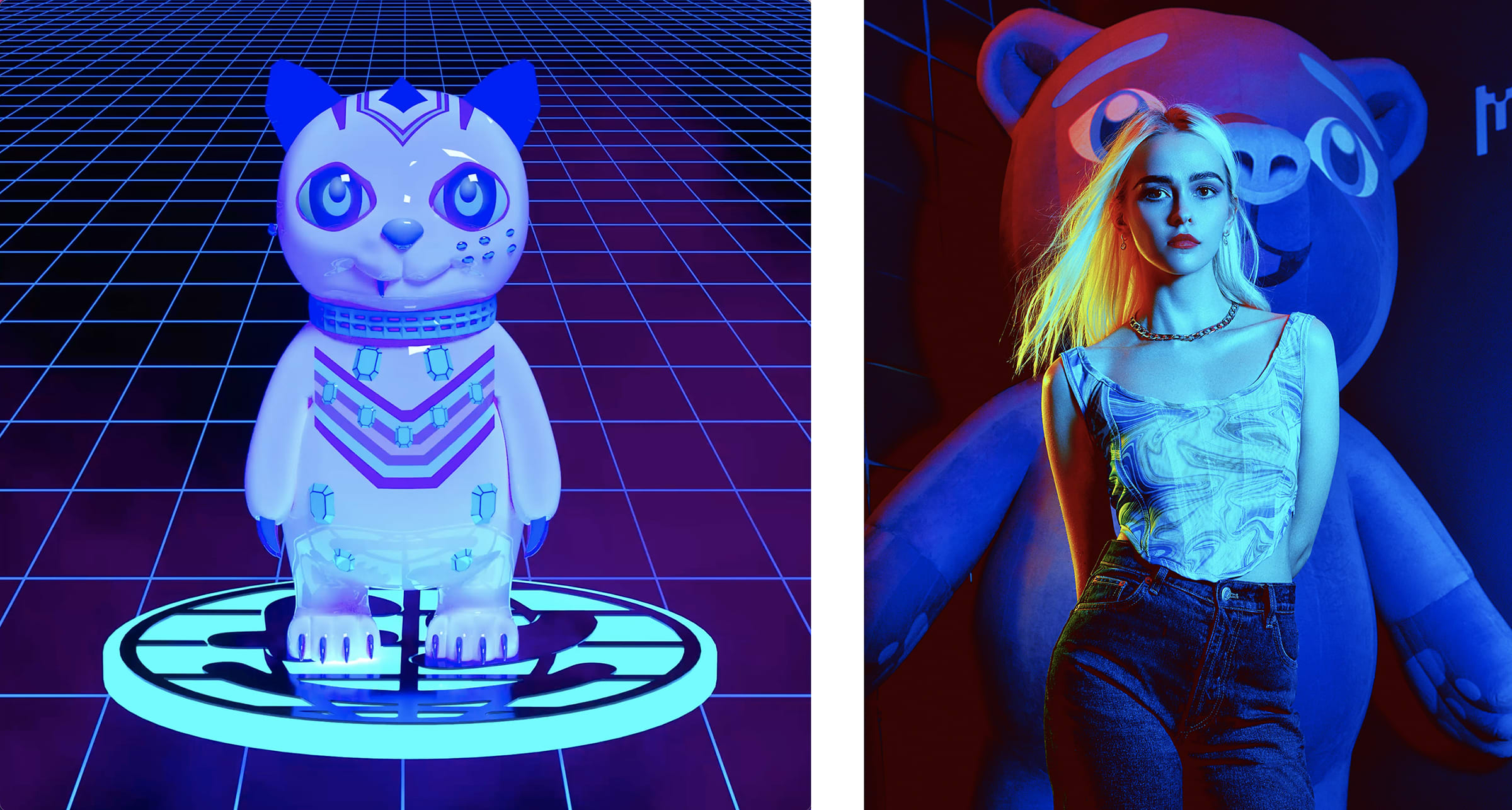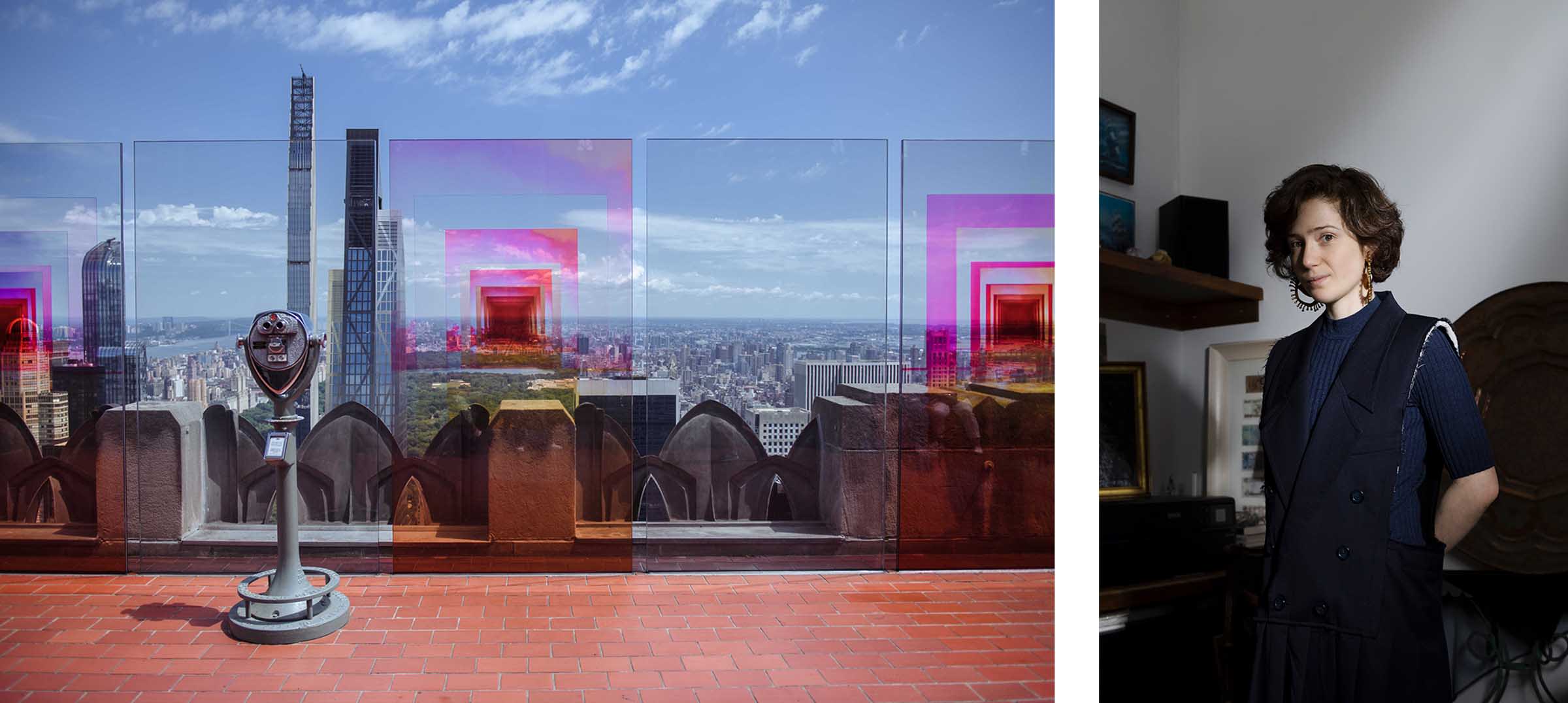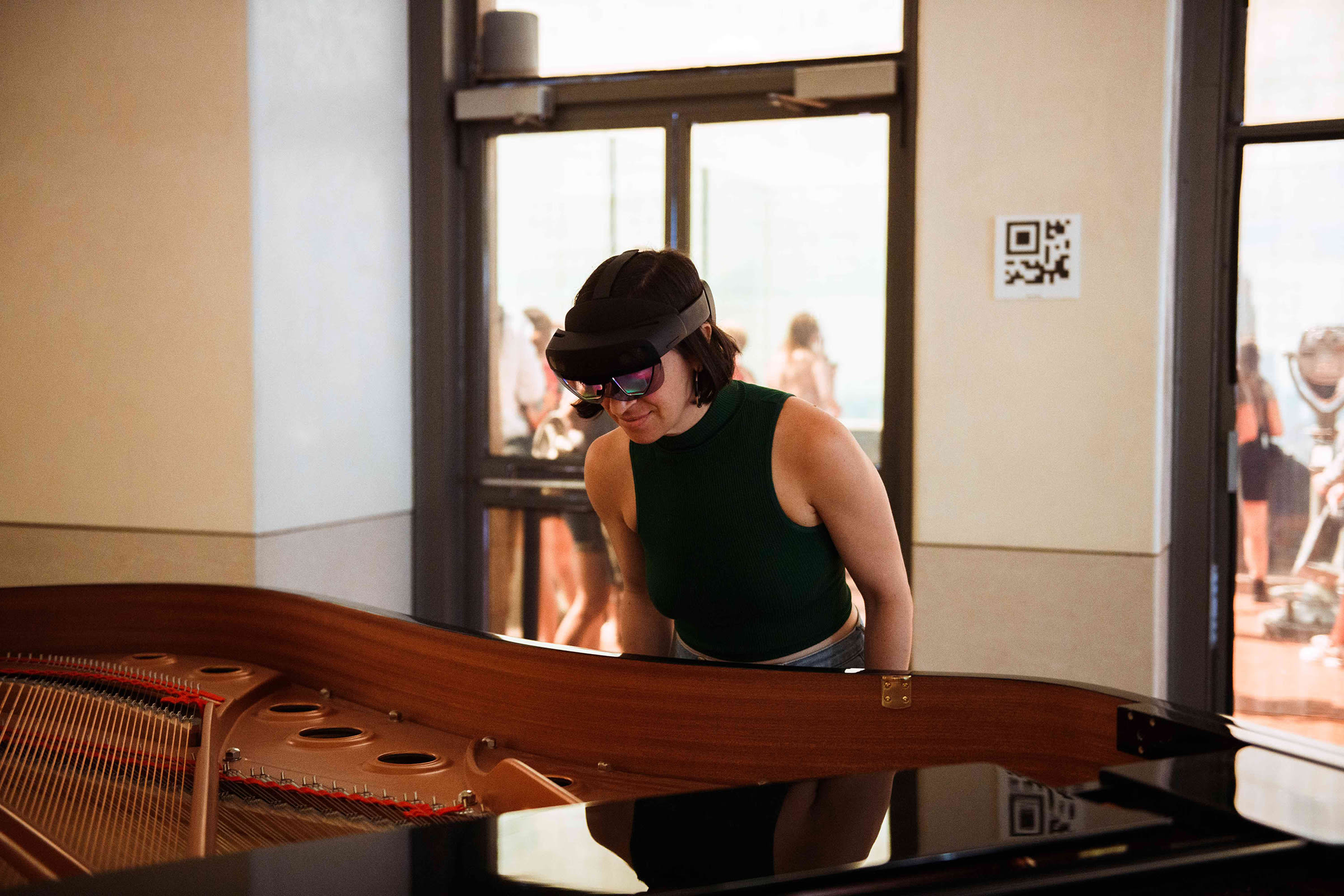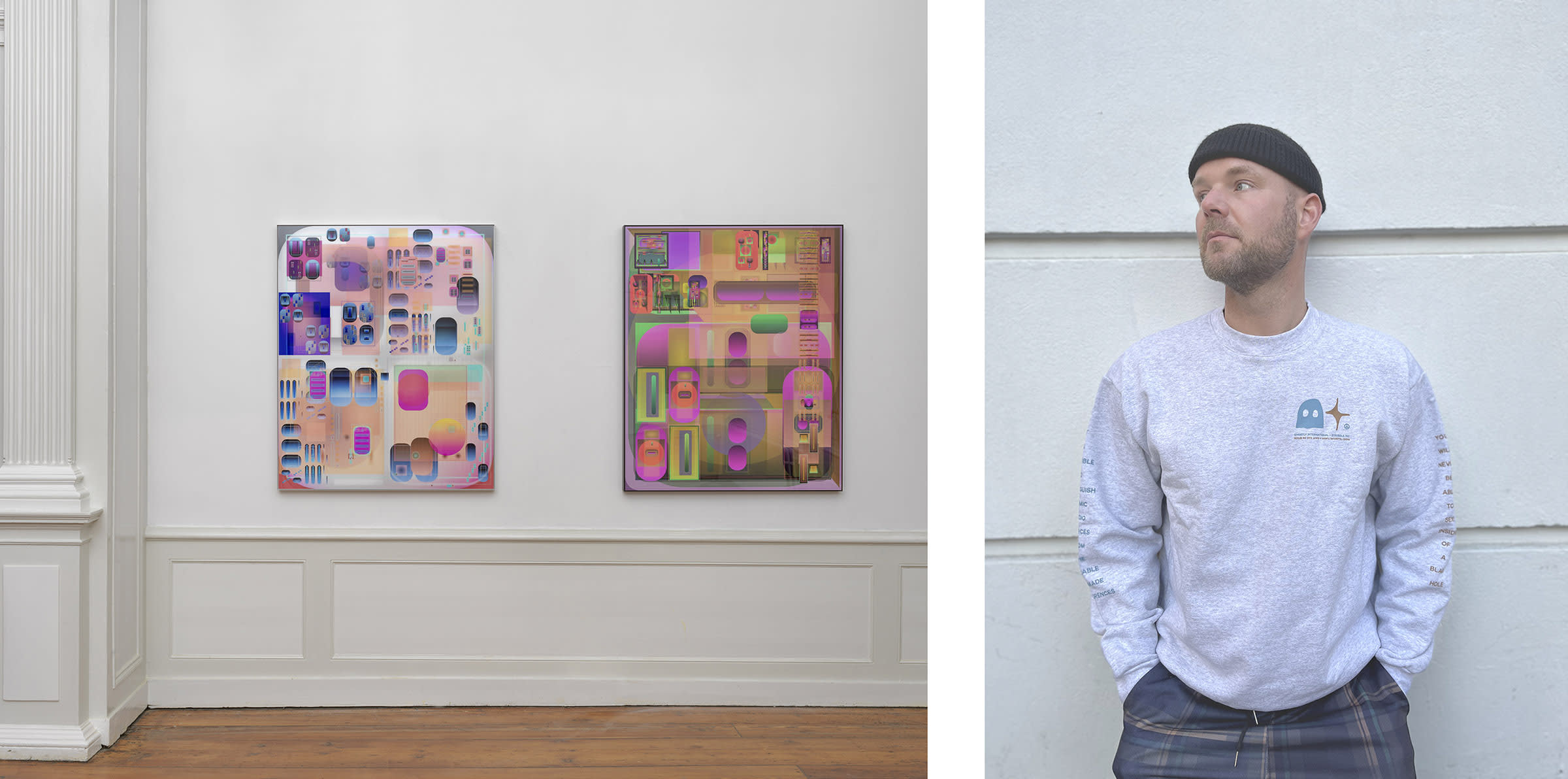‘I compare it to the birth of any other art movement,’ says Fanny Lakoubay, a digital art adviser who works with both collectors and artists, to describe the last few years of NFT art activity. The range of new digital artwork that’s being created, of course, has become extremely diverse. ‘It’s the same as painting,’ Lakoubay says. ‘Some will be good, some will be less good, and you’ll see the whole spectrum of everything.’ Three artists who are active in the digital space – Olive Allen, Sarah Meyohas, and Harm van den Dorpel – give a sense of its breadth, complexity, and substance.
Olive Allen
Although the Brooklyn-based artist Olive Allen paints as well as creates pieces in the digital realm, she feels that working with computers provides a sense of freedom. ‘You can do more things,’ she says. ‘You have more constraints with canvas: You only have that surface and there’s only so much you can do. There are limitations.’
Her digital work frequently incorporates seemingly simplistic images from pop culture – like Furbys, cuddly bears, and recognizable motifs from advertising and packaging – to comment on consumerism, the environment, or the overall zeitgeist. It’s a natural progression for Allen who, along with painting and drawing as a child, has spent ample time on the internet, especially streaming films by directors like Wes Anderson.

She began creating NFT art before it was widespread – she dropped her first piece in 2019 – and has seen the arena change. ‘It became saturated and noisy pretty quickly,’ she says. ‘It’s still early days, don’t get me wrong, and it’s a bit wild and confusing.’
Earlier this year, her work was exhibited in a solo show, ‘Welcome to the Metaverse’, at New York’s Postmasters Gallery; this season, she unveiled a collaboration with lingerie brand Fleur du Mal that included a collection of both digital-only pieces and physical items adorned with prints she designed. ‘I find this collaboration quite empowering and unexpected for the people who know me more as a fine artist,’ she says.
Although she was born in Russia, Allen has lived in the United States for many years and says her nationality doesn’t consciously impact her work. ‘For me, it’s my reality,’ she says of being Russian. ‘I feel I’m just a person that has a certain background, that I didn’t choose, like skin color, nationality, and all those things you don’t really choose. You don’t question it from that perspective, just like I never let my gender, my education or lack of it, or anything stop me, because I’m more than that.’


Sarah Meyohas
Although Sarah Meyohas’swork has undeniable substance, and sometimes comments on accepted notions of material worth, it also is invariably imbued with a cheeky sense of humor. Take, for example, Bitchcoin, the unit of cryptocurrency she created in 2015 that can be used in exchange for the photography that she also creates. Or what she launched in September: NFTitties. ‘I like to be encapsulating these two very seemingly different things: something that’s radical, forward thinking and financially somewhat sophisticated, and also just hilarious and girly,’ she says.
The work’s depth, given Mehoyas’s background, isn’t all that surprising: She graduated from the University of Pennsylvania’s prestigious Wharton School of Business, and also then earned an MFA from Yale University. Some of her work, like Stock Performance, specifically explores economic values and finance.
As of this year, her work is carried by New York’s prestigious Marianne Boesky Gallery, where she’ll have a solo show in 2023. (Meyohas works in physical media like photography as well as the digital realm.) Her piece Dawn Chorus was installed for several months earlier this year (July through September) at New York’s Top of the Rock space, inviting viewers into an AI experience, complete with music and images that give it what Meyohas calls ‘a Fantasia vibe’.
For her new work, Mehoyas, who is based between New York and London, has extremely straightforward goals.
‘I want to make work that is inspiring to people and, in some sense, quite timeless, even though it’s really a link to a technology and a thing that’s of the moment,’ she says. ‘I want to transcend all the ugliness that we’re experiencing politically, and have the artworld and art be an escape from it rather than hitting you on the head with our social problems.’

Harm van den Dorpel
Although he’s best known for his digital work – like the ongoing series ‘Mutant Garden’, which explores the relationship with between computer algorithms and genetic coding – Harm van den Dorpel works in a variety of media, including sculpture and painting. Since he was a child, passionately drawing and also learning, around age 11, how to program his father’s computer. ‘For me, the making of art on paper or the computer was always very much the same thing,’ he says. ‘It was later that I noticed that the artworld was just so torn between media art and gallery art, but I’ve always disliked that distinction. … I’ve always made a case that I don’t believe that there’s any difference between virtual or physical things,’ he adds. ‘That’s all very arbitrary. Things on a computer are just as real as when they’re not on a computer.’
His success at physical art institutions, perhaps, shows that he has indeed defied that distinction. His computer-generated work is in the permanent collection of Amsterdam’s Stedelijk Museum and has been shown at galleries like Nahmad Contemporary in New York and Takuro Someya Contemporary Art in Tokyo.
His pieces often conceal a deeper message through geometric and bright patterns. ‘I try to seduce with aesthetics and colors,’ he says. ‘People might not completely understand what lies beneath the surface or what the concept is, but at least they might be drawn to it because they think it’s just beautiful. And, hopefully, it is like a Trojan horse.’
While he’s lived in Berlin for the past decade, van den Dorpel is Dutch, with a mix of assertive color and refined sense of order that brings to mind another Dutch artist, Piet Mondrian. His fluidity between artistic media never seems superfluous: ‘I try to make work that is medium-specific,’ van den Dorpel says. ‘I like to have a reason why something is in a specific medium, and also to change the expectations of people about a certain medium.’
This article was originally commissioned for the Art Basel Miami Beach magazine 2022.
See also Fanny Lakoubay and Sarah Meyohas in 'The New Patrons: NFT Collectors and Supporters', as part of the Conversations program at Art Basel 2022. Watch it below. (can you also embed the video here as per the Manuel Mathieu one below).